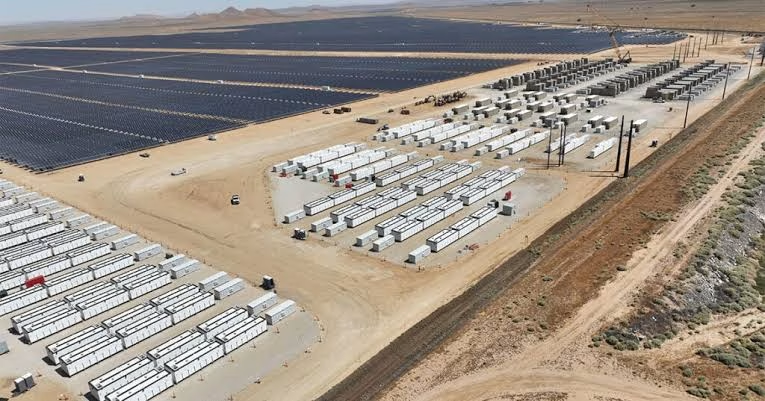The European Bank for Reconstruction and Development (EBRD), African Development Bank (AfDB), and British International Investment (BII), the United Kingdom’s development finance institution and impact investor, are expected to issue a total of US$ 479.1 million of funds to Obelisk Solar Power SAE following the Obelisk Hybrid Solar and BESS Project Financial Close that was reached today. The renewable energy project is a special-purpose vehicle incorporated in and owned by Scatec ASA.
The funds from this Obelisk Hybrid Solar and BESS Project Financial Close be provided will be utilized in the development of a 1.1 GW solar photovoltaic (PV) power plant integrated with a 200 MWh battery energy storage system (BESS) in Egypt’s Nagaa Hammadi region.
Factsheet
Name: Obelisk Hybrid Solar and Battery Energy Storage System (BESS) Project
Location: Nagaa Hammadi
Developer and operator: Scatec ASA
Cost: Approximately $590 million
Project type: Hybrid Solar PV Plant with integrated Battery Energy Storage System (BESS)
Capacity:
Solar PV: 1.1 GWac (Gigawatt-alternating current)
Battery Energy Storage System (BESS): 100 MW / 200 MWh
Also read: Scatec Commences Construction of 1.1GW Obelisk Solar PV and BESS Project in Egypt
How Stakeholders will Contribute Funds as Per the Obelisk Hybrid Solar and BESS Project Financial Close
EBRD
The EBRD is expected to provide a loan of up to US$ 173.5 million. Out of this, $ 101.9 million will benefit from a European Fund for Sustainable Development (EFSD+) first-loss cover guarantee for the first 18 years. This will be in addition to a US$ 6.5 million grant from the EBRD Shareholder Special Fund.
AfDB
Furthermore, the AfDB’s funding package of US$ 184.1 million will include a total of $ 125.5 million of ordinary resources. There will also be a concessional funding from AfDB-managed special funds the Sustainable Energy Fund for Africa that will be worth US$20 million and another $18.6 million from the Canada-African Development Bank Climate Fund. This is a joint partnership between the AfDB and the government of Canada. Lastly, a further $20 million will be channelled from the CIF’s Clean Technology Fund via the AfDB.
BII Contribution in the Obelisk Hybrid Solar and BESS Project Financial Close
According to this Obelisk Hybrid Solar and BESS Project Financial Close, BII funding will include a US$ 100 million concessional loan. Also, it will include a $15 million returnable grant that helps reduce especially the overall cost of the BESS part of the project. Therefore, this will make it even more financially viable and affordable while attracting private-sector participation and creating models for future investments. BII’s funding is subject to drawdown conditions.
The renewable energy project joint financing of $ 479.1 million is roughly 80 per cent of the overall estimated capital expenditure of $590 million.
Also read: Africa’s largest solar photovoltaic farm Obelisk solar project in Egypt to receive US$184m
Developer
The entire integrated power plant project will be developed by Scatec. Scatec is a leading renewable energy solutions provider.
Furthermore, the project will be built in two phases. The first phase will consist of 561MW of solar and 100 MW/200 MWh of battery storage. Additionally, it will commence its operations in the first half of the year 2026.
As for the second phase it will consist of 564MW of solar. This phase aims to kick off operations in the second half of 2026. The energy from the project will be sold under a US dollar-denominated 25-year power purchase agreement with the Egyptian Electricity Transmission Company with the support of a sovereign guarantee.
Also read: Egypt’s 650MW GOS II Wind Farm Project Complete, with EWA Group Playing Crucial Logistics Role
Significance of the Project and Obelisk Hybrid Solar and BESS Project Financial Close
Once completed the project will be the first integrated solar photovoltaic and battery storage project of this scale in Egypt. This funding marks a significant milestone in the country’s general energy transition.
Egypt has ambitious goals of attaining 42 per cent of renewables in its power mix by 2030. The solar power plant is expected to produce roughly 3,000 GWh annually of additional renewable energy. This is expected to enhance Egypt’s grid stability and manage peak demand. Lastly, it will also reduce carbon dioxide emissions by up to 1.4 million metric tonnes per year.
Also read: AMEA Power Commissions Amunet Wind Power Plant Project in Egypt, Africa’s Largest Wind Power Plant

